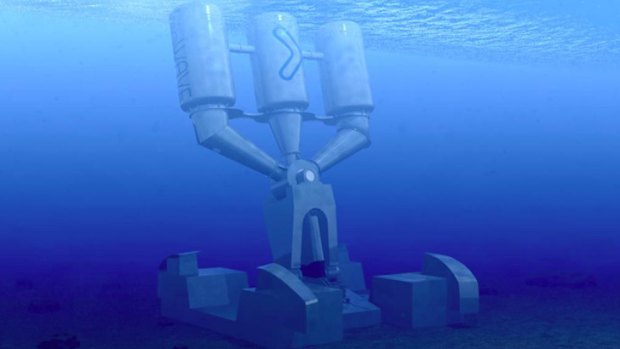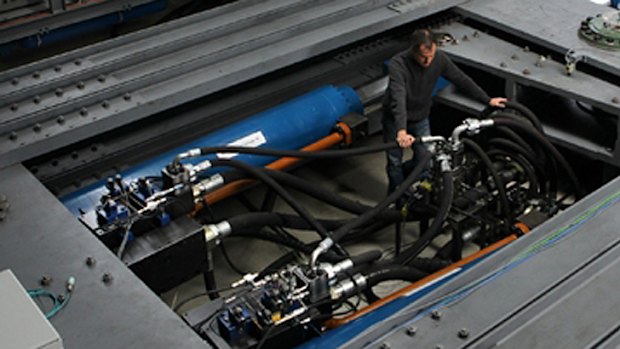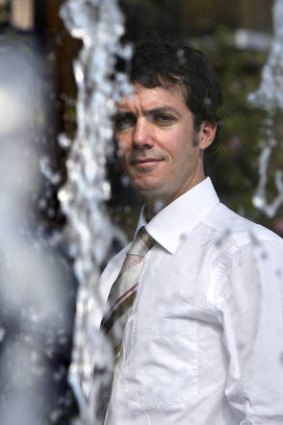By Peter Hannam
Budding wave energy hopeful, BioPower Systems, has formed a "strategic alliance" with one of China's biggest industrial firms as it seeks to develop wave energy technology to commercial scale.
Shanghai Electric, a wind turbine maker which also claims to be "the largest fossil-fired power equipment supplier in the world", will initially act as an observer for BioPower's pilot project near Port Fairy, on Victoria's south-west coast.

BioPower's planned wave energy plant.
The two companies will collaborate on technical issues, with Shanghai Electric potentially building large components of the power units if the technology is shown to be commercially viable.
The alliance intends to enable development of the firm's bioWAVE technology to a commercial stage "within a reasonable time frame”, founder and chief executive Dr Timothy Finnigan said.

BioPower's O-Drive equipment test rig in Sydney.
The planned 250 kilowatt-sized demonstration plant will need some manufacturing heft. With a height of a 10-storey building, the 400-tonne unit would sit just below the surface of the sea to maximise the power generated from waves.
To achieve commercial scale, Dr Finnigan said units would need to be increased to 1 megawatt, with as many as 100 of the units deployed in one location.
"This is serious capacity and it will require the capacity of a major company to be involved," he said.
Barring any setbacks, the 250-kilowatt project will be in place by November 2013, while a 1 megawatt unit could be in place by 2015 "if all goes well", Dr Finnigan said.

BioPower CEO Tim Finnigan.Credit: Jim Rice
A July CSIRO report into the potential for ocean-sourced renewable energy found the total wave energy crossing between Geraldton in Western Australia and southern Tasmania amounts to five times Australia's total energy needs.
The study identified wave energy as the most promising of the three ocean sources of renewable power - wave, tidal and ocean current - with the other two unlikely to make a make a significant contribution to Australia's supply by mid-century, despite large investments planned for them.
"One of the nice things about wave energy [generation] is that it's fairly unobtrusive - you can't see it," said Dr Peter Osman, senior scientist for CSIRO's Energy Transformed Flagship, and manager of the Ocean Renewable Energy 2015-2050 report. "But you do have to be careful where you put it so that it doesn't interfere with shipping or fisheries."
Dr Osman said most of the research had focused on identifying wave energy resources along Australia's south coast with relatively little study of the east coast's potential. Similarly, more work is needed to understand the environment effects of wave energy plants.
"An advantage might be that you reduce erosion on a beach by calming the waves," he said. A disadvantage might be that the habitats of rock lobsters or other creatures might be affected by sand redistribution.
"The main difficulties for wave technology are that you have to maintain it over 25 years and make sure it can withstand unusual events," Dr Osman said.
Dr Finnigan said the wave energy units are designed to mimic nature, and can be laid flat to reduce the risk from adverse weather.
Grants from federal and state governments have supplied BioPower with $10.6 million in development funds, or about half the money spent by the firm.
BioPower's partners or investors include Lend Lease, Germany's Bosch and Siemens - itself a partner with Shanghai Electric - and Keppel Prince, a local supplier to wind farms.
Peter Hannam is carbon economy editor.